Once-Popular Seasonings People Stopped Using
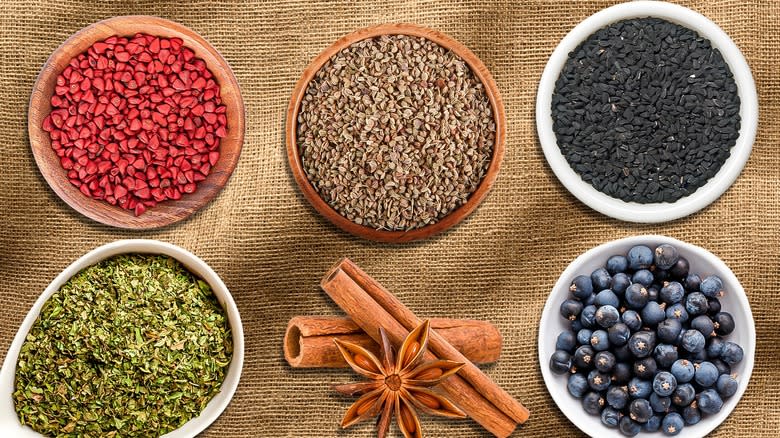
Are you looking to expand your spice cabinet? Or maybe you're just interested in what food used to taste like? Many herbs, spices, and other seasonings that used to be popular aren't utilized much anymore. From herbs that have gone extinct, to those that lost popularity due to the appearance of other, newer, more interesting spices, there are lots of reasons that we no longer use certain seasonings. Some seasonings are popular in other parts of the world (though perhaps not as popular as they used to be) but are underutilized in the American kitchen.
Here, we explore the history of a dozen different herbs and spices that are uncommon or unheard of in the U.S. Many of these seasonings have roots all the way back to ancient Rome, or perhaps even further in the world's culinary past. We will look at their health benefits, flavor profiles, and most importantly, uncover why people stopped using so many of these delicious seasonings.
Read more: 16 Little-Known Facts About Salt
Lovage
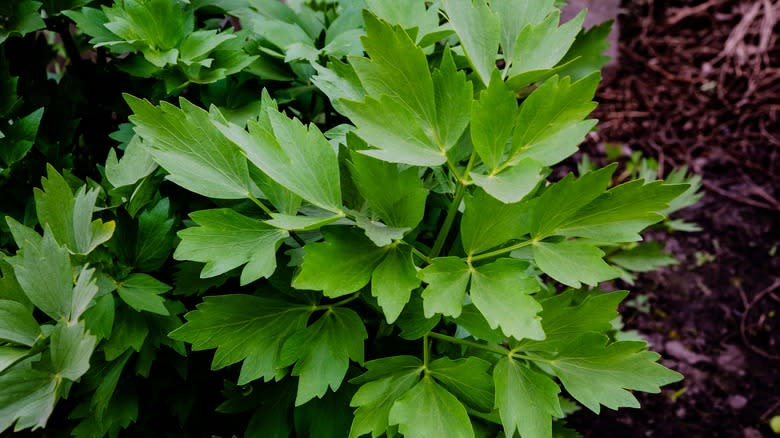
This herb, while almost unheard of in America, is a staple seasoning in Southern and Eastern European cuisine, as well as in countries like Germany and England. Lovage comes from the same family as celery, parsley, and carrots. Its use goes all the way back to Roman times; the Romans were a huge fan of this herb, using it for its medicinal properties as well as for its delicious flavor. Even today, lovage root is used to create certain medicines to treat kidney damage, kidney stones, indigestion, and coughs, among other ailments.
Lovage's flavor profile can be described as somewhere between parsley and celery. It does, however, have its own distinct flavoring, which is more zesty than either parsley or celery can claim to be. It is a delicious, herbaceous seasoning with a distinct flavor.
Lovage can be used in many different ways. Both its leaves and its seeds are edible, although these are used for different purposes in cooking. Lovage seed is super similar to celery seeds; they are so similar, in fact, that they are basically interchangeable. Lovage leaves have a bit of a stronger flavor, and pair well with traditional European flavors and ingredients such as pork, poultry, and even fish. If you can't get your hands on lovage, there are some substitutions you can make. While nothing will give you that exact flavor, a combination of celery, parsley, celery seed, and lemon zest will provide a similar flavor profile.
Savory
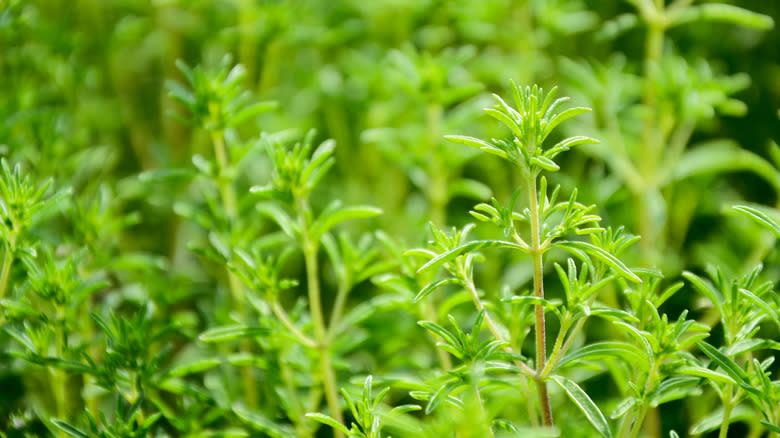
Savory is another ingredient that, while practically unheard of in the U.S., is much more common in Eastern Europe. It is a native of Southeastern Europe, and provides a delicious flavor profile similar to that of thyme in cooking. This now-unknown herb dates back to Roman times, when it was known as the "herb of love." At the time, savory was known as an aphrodisiac and was used to make love potions. This herb maintained its popularity throughout Europe until the spice trade between Europe and Asia was established. At that time, black pepper was introduced, and savory faded in popularity.
The herb comes in two varieties; summer and winter savory. While summer savory provides a sharper flavor, winter savory is mellower and more earthy. Both varieties of the herb are akin to thyme, though they also have subtle notes of mint and marjoram. Savory has many health benefits, including acting as a natural antiseptic. It can also be used as a holistic remedy for sore throats, bacterial infections, asthma, and other respiratory problems.
Savory is great when paired with meat that will be slowly roasted such as pork, chicken, or beef. It is also a staple ingredient in herbs de Provence, a popular French seasoning blend. It is usually paired with oregano, thyme, rosemary, and marjoram.
Silphium
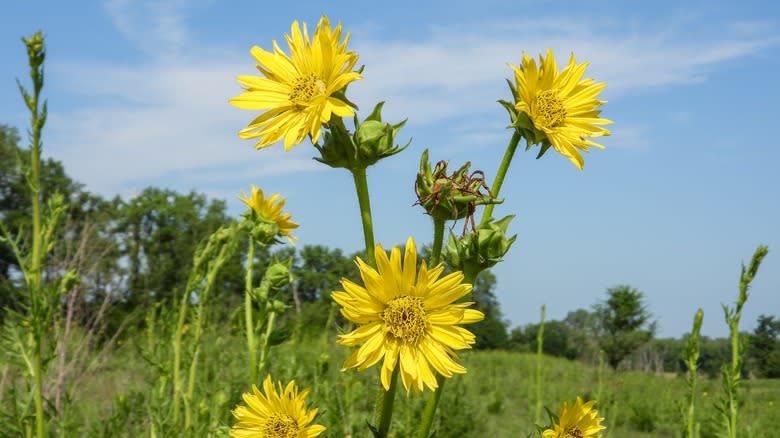
This herb has lost its popularity for a very good reason: It is now extinct. Silphium grew in ancient Rome and had little yellow flowers. These flowers were not the reason this herb was so beloved that it was as expensive as gold, however. Silphium was full of a sap that was, apparently, delicious. Silphium was used in totality; its stems were sautéed, its roots dipped in vinegar, its flowers used as herbs, and the sap was dried out and grated over food like some sort of Roman Parmesan. This herb was crucial to Roman cuisine, the same way that bread and honey were.
Silphium also happened to have many health benefits, and was used as treatment for almost any ailment in Rome. It was considered an aphrodisiac and consumed in the bedroom. The herb, which had heart-shaped seeds, might be the reason that hearts are associated with romance even to this day. There are even signs that suggest that silphium was the first ever effective form of birth control, as it was consumed to "purge the uterus."
So, why did silphium vanish? Silphium was native to North Africa, and Romans and Greeks could never figure out how to farm the herb on European soil. Because of this, silphium was always gathered from wild growths and sold, often on the black market. Eventually, demand simply exceeded supply, and the over-harvested plant ran out.
Grains Of Paradise
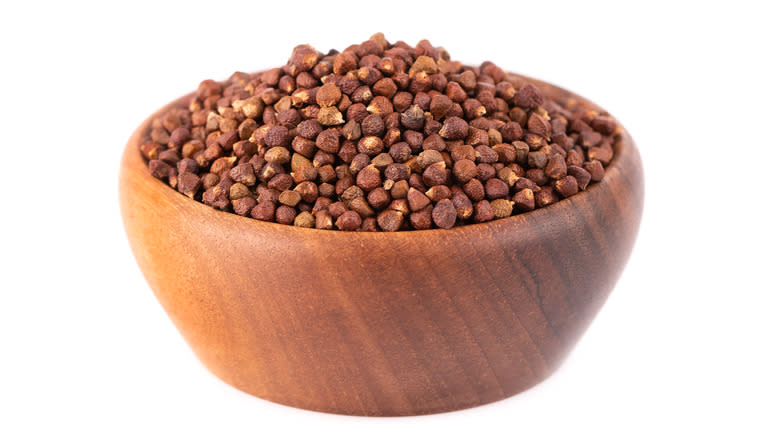
Grains of paradise have a name that certainly paints them as a delicious, aromatic spice. So why aren't they more well-known in the United States? This spice has origins in Western Africa and has a peppery heat along with notes of citrus, cardamom, ginger, nutmeg, and juniper. It can be used as a substitute for pepper. Grains of paradise are seeds, and their plant belongs to the same family as ginger.
In Europe, grains of paradise were used in beer- and winemaking until the 1800s. Today, it is still used in the production of certain spirits, such as the Scandinavian aquavit. It used to be a much more common spice universally, but as the price of black pepper dropped and that spice became more ubiquitous, the use of grains of paradise waned. It is still a staple in much West and North African cooking, however, and may be a great addition to your spice cabinet.
Sold as whole seeds, grains of paradise have many applications in cooking. They can be used whole and removed before serving, similarly to how you might use cinnamon, cloves, or bay leaves. They can also be ground like pepper. Their fragrant flavor lends itself well to Middle Eastern, African, or Indian cuisine. That said, if you are willing to experiment, grains of paradise can be used as a substitute for black pepper in any number of dishes, such as this delicious cacio e pepe.
Nigella Seeds
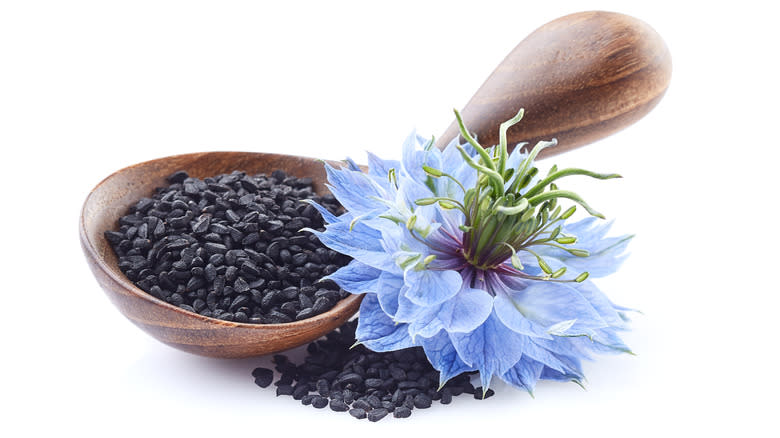
Nigella seeds are another spice that is commonly used in African, Middle Eastern, and Indian cooking, though they are uncommon in Western kitchens. Also known as "black cumin" and "black sesame seeds," these names only serve to confuse, as there is no relation between nigella seeds and these other spices. Instead, the spice comes from a flowering plant native to Turkey, Syria, and parts of Iraq, and it is from the same family as buttercups.
Nigella seeds have a unique flavor profile, made up of hints of onion, black pepper, and oregano. Many people also say that they are slightly nutty. They go well in curry dishes, with root vegetables like carrots and turnips, as well as with different squash varieties. While they are primarily savory, you can also try using nigella seeds in baking much like you would with sesame seeds.
Like many herbs and spices, nigella seeds have great health benefits and have been used to treat various ailments for centuries. Nigella seeds are full of antioxidants. They are also known to lower cholesterol, they may have cancer-fighting properties, and they can help kill off harmful bacteria in the body. Because of this last fact, nigella seeds have been used for treatment for anything from diarrhea to staph infections. All in all, these little seeds are a great tool to have on hand in your kitchen.
Hyssop

Hyssop is an herb that is almost as old as European culture. It is mentioned in both the Old and New Testaments, and was written about by Hippocrates. For a very long time, it was considered to be a "holy herb," containing properties that purify the body. This may be true, because hyssop, which is native to the Mediterranean, has been used for hundreds of years for its medicinal properties. Even today, hyssop is used to soothe symptoms of rheumatism, asthma, bronchitis, mosquito bites, and muscle pain.
While it is primarily known for its healing properties, it is also possible to use hyssop in the kitchen. It is not popular in contemporary cooking because it has a rather bitter taste, though the flavor similar to a very floral mint, so there are plenty of culinary applications for the herb. It can be used in pasta dishes, salads, and soups; it can be made into tea; and it is used in the production of certain liquors such as chartreuse, a unique green liqueur. It can be used in its fresh form and dried. Be aware that you often have to steep dried hyssop in water or grind it down to dust because the dried leaves can be very sharp and needle-like.
Juniper Berries

If you are a gin drinker, then you have probably heard of juniper berries. The berries, which are harvested from the juniper tree, have an extremely botanical flavor profile. While they are still used to make one of the world's most popular liquors, they are very rarely used in other forms of cooking, at least in the U.S. Juniper trees are evergreens that grow in North America, Europe, and Asia. Their use in cooking goes all the way back to ancient Egypt, Rome, and Greece. Though today their use is relatively uncommon, they are sometimes found in English, Scottish, and German cooking.
The botanical flavor of juniper berries lends itself well to meat, especially game. In Germany, it is sometimes cooked with sauerkraut, sausage, and potatoes. In England, it is used with game such as lamb or venison, as well as in some breads and other baked goods. Using juniper berries can be like using pepper; they are of a similar shape and texture, and can be crushed like whole peppercorns can, especially if they are toasted. Fresh juniper berries can also be squeezed to extract their juice, or crushed and added to your cooking to provide a strong, spicy, floral flavor.
Like any spice or herb, juniper berries also have certain health benefits. They are anti-inflammatory and full of antioxidants, in addition to being high in vitamin C. They have been used for a long time as a diuretic and may help to relieve symptoms of arthritis.
Borage
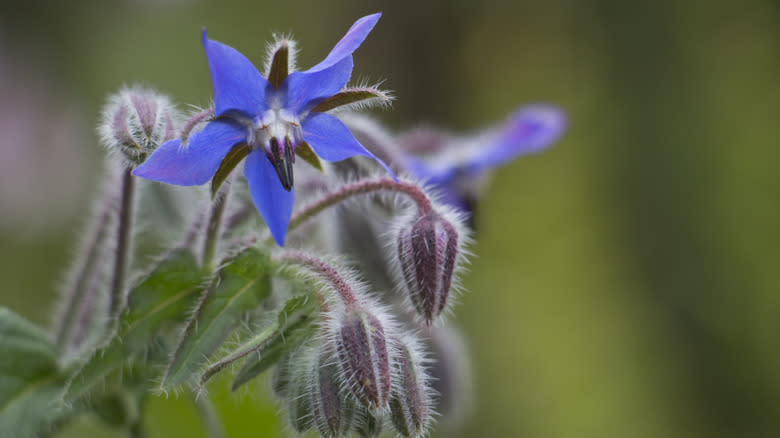
Borage, also known as starflower, is another herb that dates back to Roman and Greek times. While it used to be a popular herb grown in many people's gardens, it is now considered to be a wildflower. Borage plants have bright blue, five-petaled flowers, beautiful and startling in their color. It is the leaves that most people consume.
Borage was believed by Greeks and Romans to provide courage and comfort, especially in terms of easing symptoms of depression. Supposedly, the plant provides a euphoric effect, which is why it was used in salads for a long time to dispel sadness. In cooking, borage can also be used the same way that spinach is, both cooked and raw. Because it is an herb, borage also makes for great tea, or as an addition to summer drinks, similarly to how you might add mint to this refreshing lemonade. It has a very mild taste, which is often described as being similar to cucumber.
While it is not common, and you may not be able to find borage in the store, it is very easy to sow in the garden. It is easy to grow from seed, and its beautiful flowers will provide a glad sight for gardeners.
Ajwain (Carom Seeds)
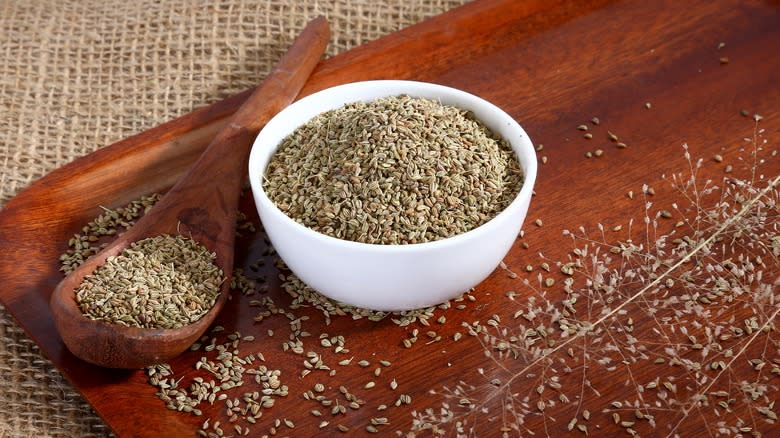
Ajwain, also known as carom seeds, is a spice that is popular in Indian cooking, though it is largely unknown throughout the U.S. Coming from a seed-like fruit, ajwain is extremely fragrant. Although it smells like thyme, its flavor profile lies somewhere between oregano and anise, with notes of mint and cumin. It is relatively bitter. Because its flavor is very strong, you don't need much to imbue your cooking with its unique flavor. It is a relative of cumin, fennel, and coriander, and has origins in Iran and modern-day Türkiye. Like many of the herbs and spices in this list, the use of ajwain dates back hundreds of years, when it was common both as a medicinal spice and in cooking in Africa, India, and the Middle East.
The best way to cook with ajwain is to use the Indian technique of frying a small amount of the spice in very hot oil, allowing it to release its flavor and temper its bitterness. In Indian cooking, it is a common ingredient in many curries, although the seeds can also be used whole in baking, or as the garnish to rich, buttery dishes. Being high in fiber and antioxidants, ajwain also has many health benefits. It may help with certain ailments; for example, ajwain might help reduce cholesterol levels and aid with indigestion.
Annatto
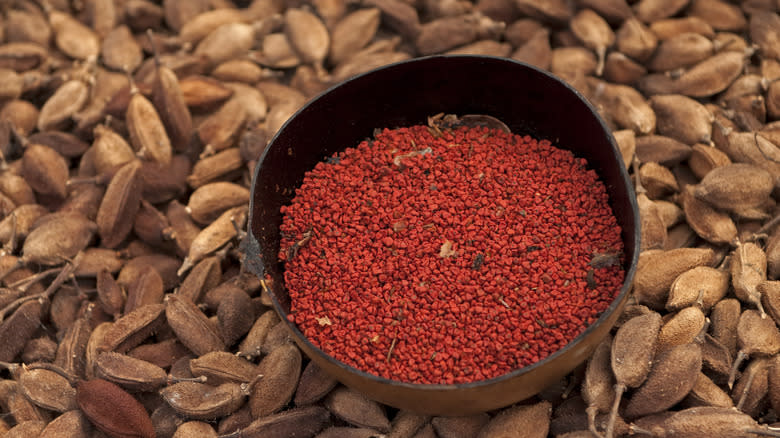
Annatto is a small seed taken from the achiote tree. While this spice is still commonly used throughout the U.S. as a food colorant due to its bright orangish, yellow hue, it is likely unfamiliar to most home cooks. Butter, margarine, and even cheddar cheese often owe their yellow hue to manufacturers' use of annatto.
Annatto is common in Latin America, Filipino, and Caribbean cuisine. In Latin America, annatto has been used for hundreds of years. In fact, the earliest uses of annatto stem back to the Incan, Mayan, and Aztec civilizations. While it is native to the Americas, annatto spread to Europe and Asia during the 17th century through Sephardic Jewish trade routes. It can be used as a dye, medicine, and in cooking, making it an incredibly versatile spice. Annatto may come in the form of whole seeds; alternatively, it may be ground into a paste or powder, or infused into oil.
In cooking, annatto's flavor has been described as slightly musky, with hints of pepper and nutmeg. It is a common ingredient in Latin American cooking, and is responsible for the yellow color of many such rice dishes. Most commonly, it is used in the form of a paste rather than whole seeds, which may be more difficult to use.
Sweetgale
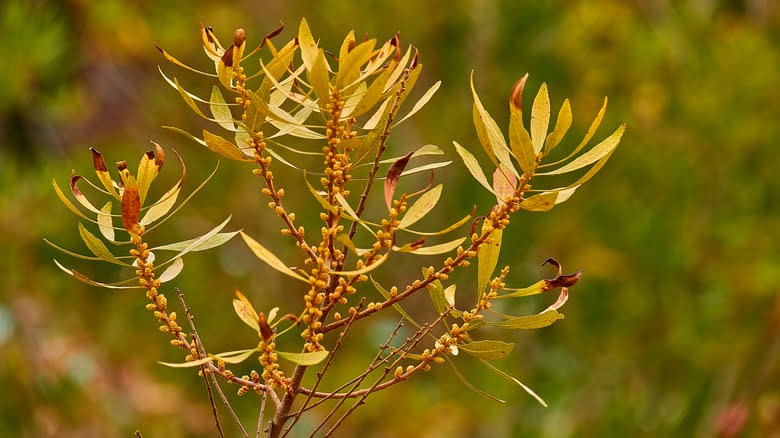
Sweetgale, also known as bog myrtle, is an aromatic herb that is native to the Adirondack Mountains, as well as parts of northern and western Europe. It has many uses, both culinary and medicinal, though it is no longer as popular as it once was. For example, throughout the 16th century in Europe, sweetgale was used as a flavoring for beer. It was also used as a seasoning and to make tea. In America, it was used by some Native American groups, although its uses were mostly medicinal.
In medicine, sweetgale is still used today. Potawatomi people once used the branches as a diuretic, and the leaves are known to reduce redness and irritation on the skin. In cooking, sweetgale can be used to marinate meat, or in fruity desserts, among other applications. It goes well with citrus, pears, and apples. Its flavor profile has been described as slightly peppery, and very mild. It has notes of nutmeg, though it also may remind you of pine.
Read the original article on Mashed


